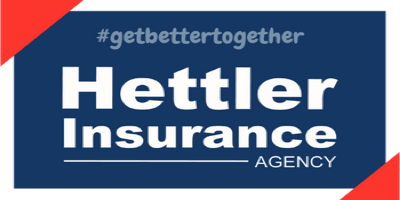
The following is an outline for free market insurance reform, written by Ron Hettler, an insurance broker that understands the health insurance marketplace, problems with the Affordable Care Act and possible solutions.
Areas for Free Market Insurance Reform include Insurance, Medical Providers, Share Responsibility Penalty, Tax Credit Transition and Networks.
Insurance
- Insurance companies can offer any medical plan their State insurance department permits. However, the coverage must be at least as broad as coverage mandated by the Affordable Care Act to include pregnancy as any other illness, unlimited benefits, and mental illness as any other illness. There will be no requirement for dental/orthodontia coverage nor vision adjustment.
- Without a special exception, only once per year from the customer’s perspective, individual and family HSA policies with an individual deductible rounded to the next $2,500 increment equal to 10% of total income (Line 22 on their most recently and timely filed 1040. Combined income from both tax returns will be used for recently married and either ½ of combined income or actual income if identified by w-2’s and 1099’s only if recently divorced) will be guaranteed issue effective the first of the month following date of application and may be issued year-round. If no 1040 is filed because of no requirement to file, then the individual/family is eligible for the minimum $2,500 per individual/$5,000 per family deductible. If no timely file 1040 is on file, the minimum deductible the individual/family may purchase is $5,000 per individual/$10,000 per family. All HSA policies with higher deductibles are guaranteed issue as well. On all policies, there will be no pre-existing condition limitation except for those who have not had ACA compatible or grandfathered coverage for 63 days or more out of the previous 12 months from the application date. For those who have chosen to not have coverage for greater than said 63 days, there will be a 1 year limited benefit on conditions that an ordinarily prudent person would have known to have existed in the previous 60 months. The same limited benefit exists for conditions that a pre-existing condition contributed to, exacerbated, or was caused by. Such limited benefit will be $1,000 in reimbursed medical expenses per calendar year. Carriers may choose to offer policies with more liberal pre-existing conditions limitations and/or more liberal benefits and individual states may choose to legislate more liberal pre-existing condition limitations but such polices would have to be offered on a guaranteed issue basis.
- Insurance is available to all residents that are legally residing in the United States as well as citizens of the United States residing anywhere in the world.
- Insurance carriers would be required to offer HSA compatible plans in each marketing avenue in which they issue product. (i.e. group, association, individual, student). All HSA plans must be 100% coinsurance following their deductibles and must have family deductibles of 2 times the individual deductible. They must issue HSA plans with calendar year deductibles with a minimum individual deductible and out of pocket maximum of $2,500 continuing in $2,500 increments up to $20,000 per individual and $40,000 per family.
- Children may stay on their parents plan until age 26 if carried as a dependent on the parent’s tax return, or until married, whichever is earlier.
- Insurance carriers will be only required to issue plans more than once per year on those who qualify for a special exception and have involuntarily lost coverage such as loss of group insurance including COBRA or state continuation benefits, incarceration, divorce, death of primary insured, cancellation due to age, marriage, or no longer being on parent’s tax return.
- If an individual/family purchases an HSA policy in any marketing avenue including group insurance with an individual deductible greater than 10% of their most recently timely filed 1040 Line 22 taxable income, then they are eligible to deduct the actual paid cost of their insurance policy as well as other paid IRS allowed medical expenses from their taxable income when calculating their 1040 Line 37 adjusted gross income without the need to meet any percentage of income threshold or itemizing. Self-employment is no longer a requirement. Self-employed health insurance deduction is repealed as well. There is no need to establish an HSA account either.
- If an individual or family chooses to establish or continue an HSA account for unexpected expenses, they may do so up to the limits of present IRS code and may continue to accumulate money in such accounts. All HSA plans regardless of their deductibles and out of pocket maximums qualify for contributions into an HSA account.
- Employers may continue to offer health insurance as employee benefits to employees and their dependents. The benefits continue to be tax deductible to employers.
- The incremental cost of employer paid (including union paid and retiree provided) health, dental, and vision insurance with benefits richer than a Section II described HSA compatible plan with an individual deductible rounded to the next $2,500 increment (subject to a maximum of $20,000) equal to 10% of total income for the family will be taxable and included in total income for the family though payments will remain exempt from all taxes except Federal Income Tax. This cost will be calculated by the IRS for each county or parish by age with all over age 65 carrying the same cost. This amount will be provided to the public for planning prior to the year that the tax will be paid.
- Group carriers (including self-funded employers) must include in their employee offerings HSA compatible plans with 100% Coinsurance after a $2,500 per individual/$5,000 per family deductible all the way up to $20,000 per individual/$40,000 per family with matching out of pocket maximums in $2,500/$5,000 increments.
- Individual policies are either standard or preferred. Preferred mean no nicotine usage in the past 12 months prior to application and a BMI of less than 35. Preferred status to be confirmed annually. Without confirmation, standard pricing will apply. Lying as to BMI or Nicotine usage will result in a doubling of deductibles for the years the lie occurred and repayment of deficient premium.
Medical Providers
- All medical providers must publicly publish a list of each of their charges to provide services, drugs, or supplies. The publication must be by type of payer whether cash, credit card, insurance carrier, medicaid, medicare, veteran’s benefits, and by provider network. This must be accessible on the internet and in print in waiting rooms by procedure code and description. They must also list their maximum charge and disclose that procedure, drug, or supplies financial ranking.
- All medical providers must submit annually to the Department of Health and Human Services a maximum cost that will be charged to a patient regardless of type of payor. DHHS will compile the data and provide each provider with a financial rank for each service. A financial rank of 1 means cost for that procedure, drug, or supply is in the lowest 10% in the state, 2 equals 11-20%, and so forth.
- If a medical provider’s maximum cost for a procedure, drug, or service is in the lowest 10% of the maximum cost for that procedure in their State then the percentage of revenue that procedure or supplies represents when compared to the provider’s total income will mean that same percentage of profit with be reduced by 50% from income tax purposes. Applying the same percentage, a 40% exemption from Federal Income taxes would be for provider’s profits from services or supplies in the 11-20% range, a 30% exemption for 21%-30%, a 20% exemption for 31%-40%, and a 10% exemption for 41%-50%.
- Except in case of emergency, any procedure involving general anesthesia, hospitalization, or surgery requires an upfront disclosure of all procedure codes with descriptions of services, supplies, or drugs that might be anticipated. A good faith estimate of the total cost if everything goes as planned will be provided to the patient by the attending physician or their staff with a disclosure of their financial rankings representing what percentile each one of their procedure codes represents when compared. For procedures, drugs, and supplies not under the control of the doctor, the provider number of the provider must be given to the patient. i.e. the doctor must tell the patient that he will prescribe the following, use the following hospital. Then the hospital must tell the patient their costs, etc. Hopefully, a system will be set up by the doctor for each operation such as a tonsillectomy, gall bladder extraction, ear tube insertion, etc. that will easily price each procedure with a catch all price.
- Rankings for each code will be 1-10 with each digit equal to 10 points on the Maximum cost submitted to DHHS. i.e. 42% will equal 4.
- Medical providers are free to advertise their trade, art, and products including pricing and other features and advantages.
Share Responsibility Penalty
- Participation is a requirement to any program’s success. If you’re required to file a tax return a shared responsibility payment paid in the form of an excise tax on everyone’s tax return equal to an additional 10% of your taxes paid prorated for the number of months uninsured and prorated for the number of people on your tax return will be required of each taxpayer that doesn’t have an individual policy, an employer provided policy, an HSA policy, Medicare, V.A. benefits, Medicaid, or other equivalent insurance. Each subsequent year, the penalty will jump an additional 5% to a maximum of 25%. There are no hardship exemptions.
Tax Credit Transition
- Individual/Family policy Tax credits as calculated with the 2010 Affordable Care Act continue to exist for 3 years with the tax credit figured off the HSA plan described in Section II. In year 1, the full credit will apply. In year 2, 66.67% of the full credit will apply, and in year 3, 33.33% of the full credit will apply.
Networks
- PPO and HMO networks continue to exist as well as customers may pay to join or join for free networks including networks set up by other insurance carriers that are even more aggressive in pricing than their own PPO/HMO network pricing and as long as pricing is lower or equal to their insurance company’s network pricing, customers may take advantage of it and file their own claim with their insurance company. They may also go to providers that are less expensive than the providers that are in-network with their insurance carrier with proper referral. This does not exempt a patient from the responsibility to follow the terms of their insurance policy including precertification of procedures or hospital stays or referral requirements except referral requirements may not require referral to only in-network providers.




